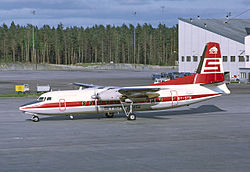Colegio de San Juan de Letran
The Colegio de San Juan de Letran, (transl: College of San Juan de Letran) also referred to by its acronym CSJL, is a private Catholic coeducational basic and higher education institution owned and run by the friars of the Order of Preachers in Intramuros, Manila, Philippines. It was founded in 1620. Colegio de San Juan de Letran has the distinction of being the oldest college in the Philippines and the oldest secondary institution in Asia. The school has produced Philippine presidents, revolutionary heroes, poets, legislators, members of the clergy, jurists, and it is also one of the only Philippine schools that has produced several Catholic saints who lived and studied on its campus. The school's patron saint is St. John the Baptist. The campus contains two statues, representing the two foremost alumni in the fields of secular and religious service: former Philippine President Manuel L. Quezon and Vietnamese Saint Vicente Liem de la Paz. Letran has programs in Business, Management, Marketing, Entrepreneurship, Information Technology, Digital Arts, Communication Arts, Accountancy, Engineering. The colleges are divided into six departments: College of Liberal Arts and Sciences (CLAS), College of Business Administration and Accountancy (CBAA), College of Education (CoEd), Institute of Communication (iCOMM), Institute of Information Technology (iIT), College of Engineering (CoE). The Colegio has successful athletic programs, particularly in basketball, football (soccer), volleyball, taekwondo, and tennis. Through the years Letran has produced numerous athletes that have donned the national colors (especially in basketball) in international events like the Olympics, Asian Games, Southeast Asian Games, Jones Cup, and FIBA World Championship. Letran is a long-time member of the National Collegiate Athletic Association. The Colegio was given Level III accreditation by the Philippine Accrediting Association of Schools, Colleges and Universities in the Basic Education department, College of Liberal Arts and Sciences (CLAS), and College of Business Administration and Accountancy (CBAA).Letran remains in its original campus in Intramuros, Manila, and is a member of the Intramuros Consortium.
Excerpt from the Wikipedia article Colegio de San Juan de Letran (License: CC BY-SA 3.0, Authors).Colegio de San Juan de Letran
San Juan de Letran Street, Manila
Geographical coordinates (GPS) Address Website External links Nearby Places Show on map
Geographical coordinates (GPS)
| Latitude | Longitude |
|---|---|
| N 14.5932 ° | E 120.9766 ° |
Address
Colegio de San Juan de Letran
San Juan de Letran Street
1002 Manila (Fifth District)
Philippines
Open on Google Maps









